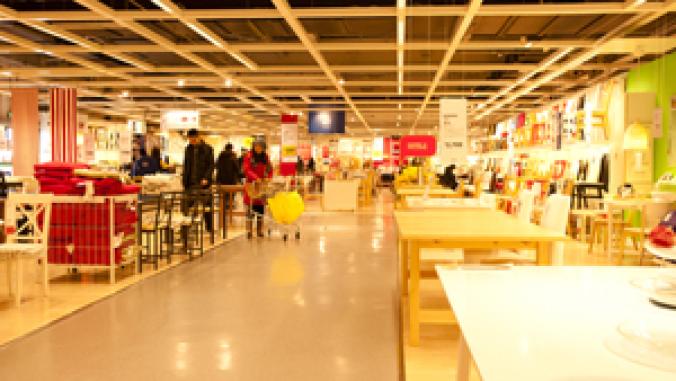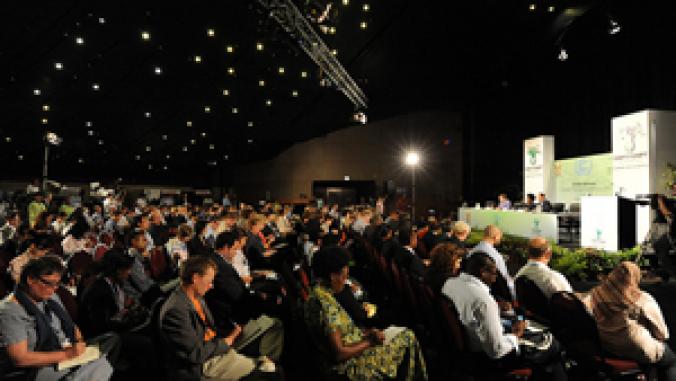View from the C-Suite: Steelcase CEO Jim Hackett
<p>The head of the world's largest office furniture supplier talks about challenges in making non-toxic furniture, end of life options for the 'Think Chair,' and his vision for increasingly virtual, mobile work places.</p>

Steelcase Inc. is the world's largest supplier of office furniture. The Grand Rapids, Mich., based company was founded nearly 100 years ago as The Metal Office Furniture Company. At the time, the company specialized in file cabinets and safes.
Today, Steelcase generates revenues of $2.4 billion through sales of interior architecture, furniture and technology products and employs about 10,000 people. The company is working to advance sustainable design through innovations in materials chemistry, lifecycle assessments, and reusability.
Heather King talks with CEO Jim Hackett about challenges in making non-toxic furniture, end of life options for the "Think Chair," and his vision for increasingly virtual, mobile work places.
Heather King: Earlier this month, Joel Makower spoke with your Director of Global Sustainability, Angela Nahikian about Steelcase's broad-based sustainability efforts. In your view, what is the business case for Steelcase's sustainability investment?
Jim Hackett: At the broadest level, it's the notion that to compete, an enterprise has to be really fit. We use the word 'fitness' in a natural order kind of way. The market is always elevating its requirements for fitness. Years ago, in long discussions with Bill McDonough and Michael Braungart, it became clear to me that the sustainability was going to be one of those fitness tests.
We considered the material choices of our products and asked ourselves, "To what extent should our customers expect -- and the world expect – that the things they buy from Steelcase consider their health, or the health of their environment?" It's a very complex problem to design and deliver products that have no toxic implications.
We've been able to achieve a product certifications that reveal our ability to eliminate and avoid some of the most problematic materials or concern. There are mainstream brands in our industry and other industries where that's not the case. There are plenty of things inside products that aren't safe and sustainable and safe.
HK: So it sounds like your primary driver was reducing the risks associated with toxic materials in your products or supply chains?
JH: hat's exactly right. We see it as a way to compete and anticipate greater focus on supply chains. Just as companies look for economic advantage in lower cost supply chains, they need a parallel focus on managing the chemistry in these products. They have to be safe for humans and the environment.
HK: What do you see as your most important product innovation to date?
JH: We have multiple examples of important innovations. Some are internal such as bringing the sheathing around the many electrical components in our products to higher standards. Some are more visible such as polyvinyl that is used to band work surfaces. There are probably 50 different aspects in a product that need to be addressed to meet Cradle-to-Cradle requirements. It takes a lot of work.
We are fortunate in that steel is a wonderfully sustainable material. Steel recycles well and its manufacturing process can be sustainable, depending how the mills are built and operated.
When the founders named the company in 1912, they probably were not thinking the name belies use of sustainable products. We realize now that we have an advantage with such a brand name. Still, steel has certain drawbacks. It is heavier than graphite and can contribute to a high carbon footprint in shipping and such. I'm challenging our team to reduce the weight of our products.
HK: Are there any Steelcase products that embody the cradle-to-cradle principles in their entirety? JH: The most specific one is the Think Chair. It is constructed in a way that you can add layers, update it and extend its life. This chair is an indication of what is to come.
We are designing products that will allow our customers to reprogram their performance. The emerging nano structures and materials in our products will mean fabric designs can actually change color over time and preclude a need for new dyes. Even surfaces will be more malleable and actually will be able to change shape. Products can be transformed and provide new life and functionality.
In addition, the design has to factor end-of-life. We already have a head start if we are not using toxic materials. We've been thinking about how to make things that redefine the waste stream.
HK: How does for Steelcase's future play with the increasingly virtual and mobile workplace? Increasingly, workers are telecommuting, or working out of a local Starbucks -- such that the very concept of office is changing.
JH: This is a golden question that we have been asking for a few years. Historically, work was fixed because technology was fixed. In 1986, personal computers were 70 pounds and needed heavy 420-pound desks to support them. Today, we have to change everything we were about because of mobility.
Even so, there are other reasons why people gather that have nothing to do with the gravity of having your computer in your phone or connected to your desk.
People come together now for different reasons and purposes. We've been thinking about how to translate workspaces to the new paradigm. We've been experimenting with new ways for people to actually relate. We've done some research and experimenting at TED; it's evolved into a concept called "Workspring."
Workspring is a form of personal day lodging that accommodates mobile workers in spaces that are comfortable and an alternative to a restaurant, a park bench, or a Starbucks.
We have invented a group of products -- media:scape -- that support the mobile requirements of groups. When you shift from individual to group needs, the spaces themselves have to be larger and supportive in a different way. With media:scape, you don't bring anything to the meeting. It leverages the web in its infinity, and utilizes this ubiquitous access for the meeting. You show up with all the information that you need and without lugging around all that stuff. We're on a journey to that future.





